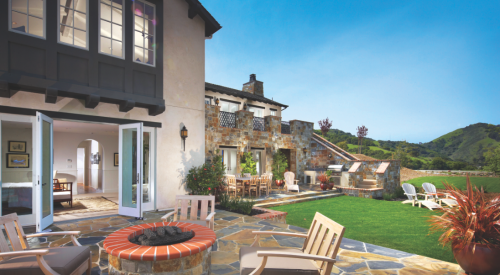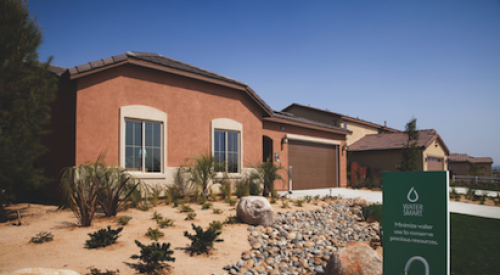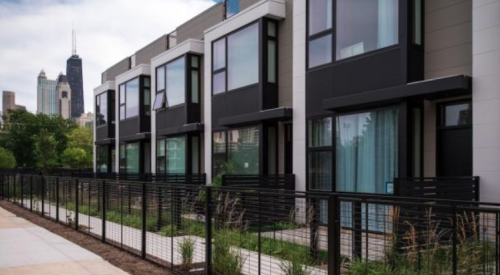 |
Decks create an extension of living space when they are thoughtfully integrated with a home's exterior. As recent as a few years ago, people weren't building as many, instead leaning toward concrete paver patios, says landscape architect Dean Hill. "Decks are back due to new materials, and now elevated outdoor areas are in."
With the outdoor room trend exploding, clients are looking to you to deftly integrate decks into their homes. We've asked masters of the outdoor domain for advice. Here is what they told us.
Know Your Clients' WantsFirst, understand what your client wants. "People are nesting and creating home sanctuaries," observes Vera Gates, a partner in the San Francisco landscape architecture studio Arterra. "Spas continue to be popular, as we hear people say, 'We're going to Hawaii for the weekend'— in their own backyard." She says her firm also finds more clients want full outdoor kitchens, fireplaces and charcoal grills.
Gates says rising real estate values warrant a need to maximize the full potential of a homeowner's property. "Clients value landscape even more so than 10 years ago."
CommunicateBoth Gates and Hill agree the key to creating a beautiful environment is communication. "Builders tend to build first and ask questions later instead of getting clarification upfront," Gates says. "The results can be difficult to correct. If you really want to save time, the builder needs to sit down with the landscape architect at the beginning to understand the quality and intent of the project."
"By involving the architect, builder, and landscape architect, you're taking a holistic disciplinary approach to the project, and as a result, the house looks more complete," Hill says.
Site constraints like elevation changes — especially for production builders — need to be addressed at the onset. "A builder might build a house first, then look at elevation issues. How do you deal with a front door that's 6 feet off of grade?" Hill says. Landscapes and hardscapes are too often last to be dealt with, so budgeting becomes a problem. "Bring in the landscape architect early and know realistically what the end budget will be," he says.
Choose Materials WiselyAfter 15 years in residential landscape architecture, Hill doesn't have any tried-and-true time-saving construction tips for builders. He does, however, recommend working with landscape architects when specifying materials. For example, of the three choices for retaining walls — masonry, 6 by 6 timber and segmental with decorative rock — a landscape architect will know that the segmental takes less time and doesn't require a tradesperson.
Go GreenGates' clients are mindful of water conservation and green products yet still opt for wood decks. "They don't like the look and feel of green products, but I think this will change," she says. Beyond wood and composite, Hill says there are appealing new products, such as Xccent's DryDeck aluminum watertight decking and Dekstone, a stone-like reinforced-concrete paver that can be installed on a deck.
"Builders often see new products before us," Gates says. "It's a team effort. We all benefit from new materials and ways of doing things. I look at builders as craftspeople and have learned a ton from the ones I've worked with."
| Author Information |
| Jennifer Block Martin is a San Francisco-based writer. |










